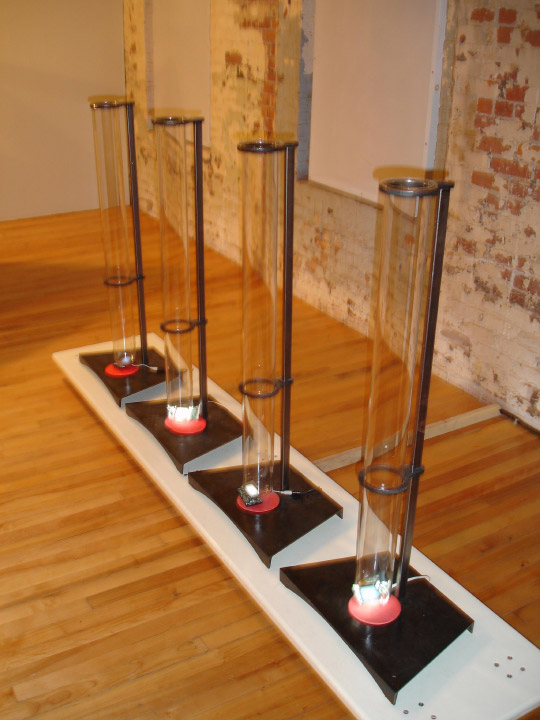 |
| Shopping Cart with a scarce amount of food |
What was even more surprising was when I searched the term Wi-Fi on the internet to see what it stands for, but realized it was a made up word. This term is commonly used, but is in actuality a social construct.
The prevalence of technology and different aspects of society was showcased throughout many of the works. What I really enjoyed about this showcase was how relevant everything was; I could personally relate to a lot of the artwork due to its reflective nature on the current state of society. I think the Design Media Arts major is a major that shifts away from the common paradigm of separate subjects; while all these pieces were artwork, they were created using non-traditional media and influences (the RSA).
 |
| Obsessed with Social Media |
Jonathan Moore's stuck between a rock and a... was the first exhibit I saw; featuring live actors, it captured my attention. Two people dressed in factory clothing, worked with rigid movements, compounding what looked to be debris in a desolate and run-down workshop. Right next to the enclosure, was an almost empty shopping cart, with an empty container of soda and one soda can, a nod to our spending habits and our almost always full shopping carts. Reminiscent of Ford's assembly lines, the actors were like machines, performing simple tasks mechanically (Vesna). The people seemed lifeless and resembled robots, and seemed to be scavenging what remnants of food remained, though it was mostly waste and trash. His piece seems to comment on our consumerism habits and our wastefulness, and foreshadows what could become of our population if we do not seek ways to conserve our resources and be less wasteful.
 |
| The dark side of human nature |
Throughout many of the works, I saw lots of references to social media, an acknowledgment to their role and influence in our society. The art was very modern, with some of them using virtual reality, and others featuring even wearable technology. Overall, it was a wonderful exhibit, with lots of hidden meanings and clever commentary embedded in the art.
 |
| Me and the VR video from Krsitin Mcwharter's project Waking the Giant Within |
"RSA ANIMATE: Changing Education Paradigms." YouTube, uploaded by the RSA, 14 October 2010, https://www.youtube.com/watch?v=zDZFcDGpL4U.
Vesna, Victoria. "Robotics pt2" YouTube, uploaded by uconlineprogram, 15 April 2012, https://www.youtube.com/watch?v=oAZ8bo9T_Pk.
Walter, Benjamin. The Work of Art in the Age of Mechanical Reproduction. Germany, 1936.


















